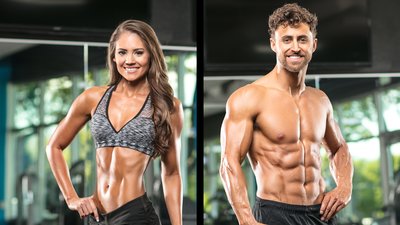Everyone wants to be ripped, but a cut physique requires more than just cardio and prayer. For the ultimate shred, you'll need to monitor weight and body composition, count calories, and calculate nutrient ratios. It can be difficult, but if you want to lose body fat and get cut, you have to put in the work.
Track Your Body Composition
To begin, measure your body composition and monitor it every week. It's not as hard as it sounds.
Body composition means the comparative percentages of fat, muscle, water, and bone in your body—but to get lean you really just need to focus on muscle and fat.
If your fat weight is outpacing your muscle weight, then you've been eating like you're on vacation, and you won't be able to get shredded without a bit of work.
When you have too much body fat, it's because you're eating more calories than you burn. One of the first things people usually do to get cut is slash their calories and increase their cardio. I have seen very large bodybuilders get down to 500 calories a day to get just a little tighter—but it doesn't work!
Our bodies see drastic calorie cutting (working out and starving yourself) as a threat to our survival and immediately begin to store fat for future needs.
In starvation mode, the lean muscle mass is devoured first, so dropping calories too quickly is counterproductive—you're cutting calories, but your fat mass is staying put and your muscle mass is dropping!
Any weight loss of greater than 0.3 pounds per day will include lean muscle loss, which is not the goal. To get shredded, lean muscle loss must be minimized.
Overall weight loss, therefore, must be paced and planned to lead to fat loss. This is why weekly monitoring of your body composition is important.
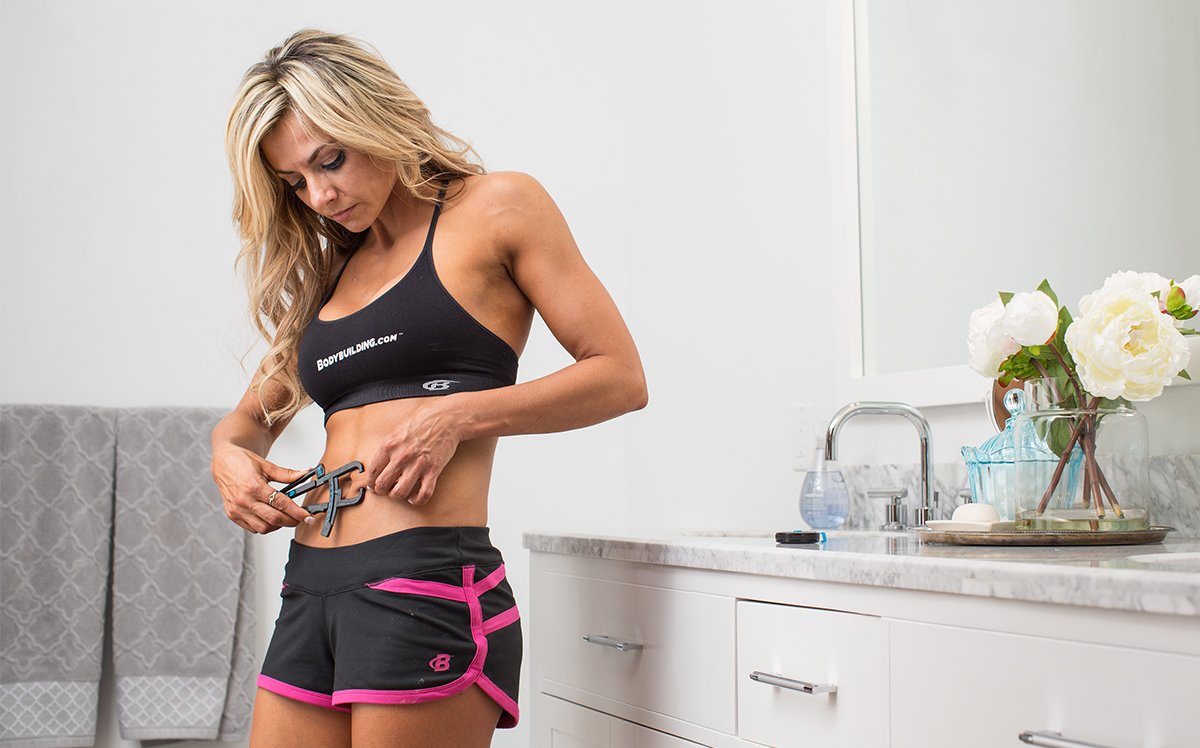
Know How Much to Eat
You'll need to know your caloric needs in order to get ripped. The more lean muscle tissue you have, the higher your metabolic rate, or speed of energy burn, while the more body fat you have, the lower your metabolic rate. To simplify: More muscle leads to higher calorie burn, while more body fat leads to slower calorie burn—it's the exact opposite of what you hope for when you have too much body fat!
Each of us has a minimum daily calorie requirement to live, and a certain rate at which we burn calories in the gym.
To sustain our current weight, we need to consume the daily calories we generally need to live, plus the calories we burn in the gym.
For instance, a 150-pound man spending an hour a day in the gym would need to consume 1950 calories each day just to sustain his weight (1600 calories to live, plus about 350 calories burned in the gym in an hour).
To get shredded, that same man would need to drop some of those calories. There are great calorie counters to help you figure things out.
You will need to adjust your calories weekly, according to body composition changes and personal appearance (the shred factor).
If your lean mass is maintaining and fat is dropping off—you're on the right track!
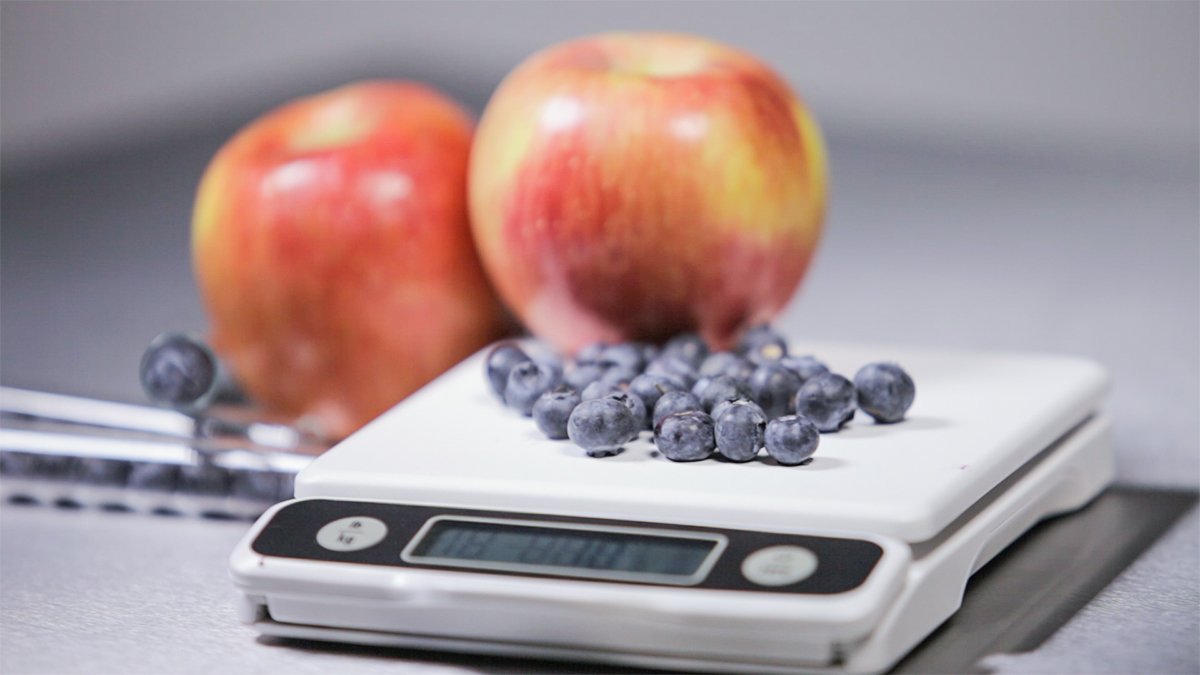
Eat a High-Protein Diet
Protein increases satiety, or the feeling of fullness, and protein digestion burns more calories than fat digestion. So a high protein diet is perfect for fat loss.
Eating enough protein is also essential to maintaining a positive nitrogen balance and repairing damage from your workout.
You'll want to consume a steady supply of protein, at least every 2.5 hours, to avoid muscle being burned at the most catabolic times of day.
Focusing on protein allows you to feel more full, burn more calories, and eat less fat to begin with.
Cut Certain Carbs—Not All Carbs
In general, your high-carb days are over if you want to get lean. Just as on any diet, the amount of carbs should be restricted because an overdose of carbs is readily stored as fat. Also, carbs spike insulin, and insulin increases sugar cravings, which lead, if indulged, to more carbs, then to more insulin spikes, then to more sugar cravings—it's a vicious cycle!
And yet, if we don't have any carbs to burn, our protein will be burned instead, which is what we don't want!
So, it's important that we get carbs, but from the right sources. If you eat small portions of legumes, grains, sweet potatoes, and vegetables instead of large chunks of bread ripped from the loaf like a carb-starved animal, you should be fine.
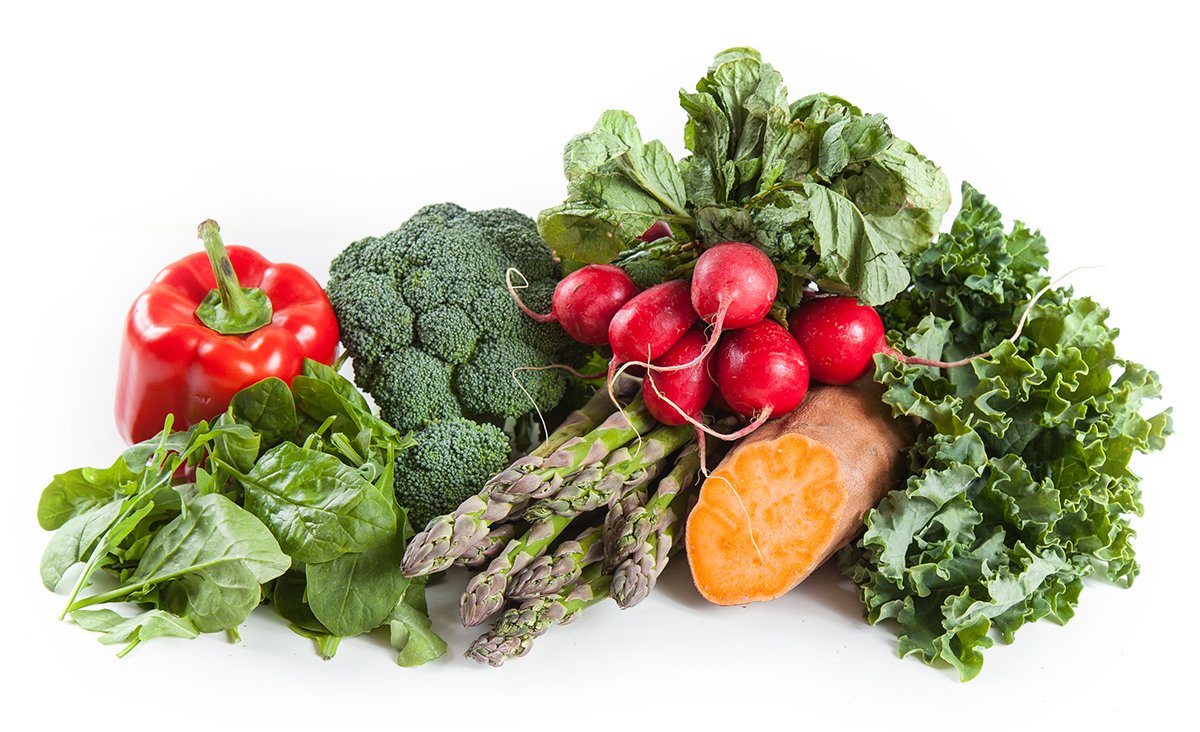
Don't Avoid Fats
You want fat loss, but dietary fats, as an alternative fuel to carbs, should be slightly increased as you cut other calories. They'll curb hunger and carb cravings, helping to limit your sugar intake.
Fats are beneficial to hair, nails and skin, and they also help make testosterone and vitamin D. This optimizes the protein-sparing effect and assures proper repair of damaged tissue.
The fats you add should be healthy, clean ones such as flax or olive oil, fresh nuts, and avocados.
Saturated fats, the kind commonly found in processed foods, have very little use in the body, are horrible fuel for a workout, and are equally horrible post-workout. In general, stay away from them.
Refuel with Protein Post-Workout
Forget all that stuff about breakfast being the most important meal of the day—if you're trying to get lean, post-workout nutrition is a lot more important!
When dieting, you are in a catabolic state most of the day. Your workout only adds to that catabolism, as you expend more calories and damage more muscle tissue. If you're not careful, the damaged muscle will be burned and become smaller instead of larger!
Instead of weight-gainer shakes, which are too high in carbs, you should be focused on protein powders, preferably blends of whey and casein. The whey acts fast and is rich in the amino acids you need to speed up recovery. The casein burns slower, releasing its aminos steadily over the next three hours.
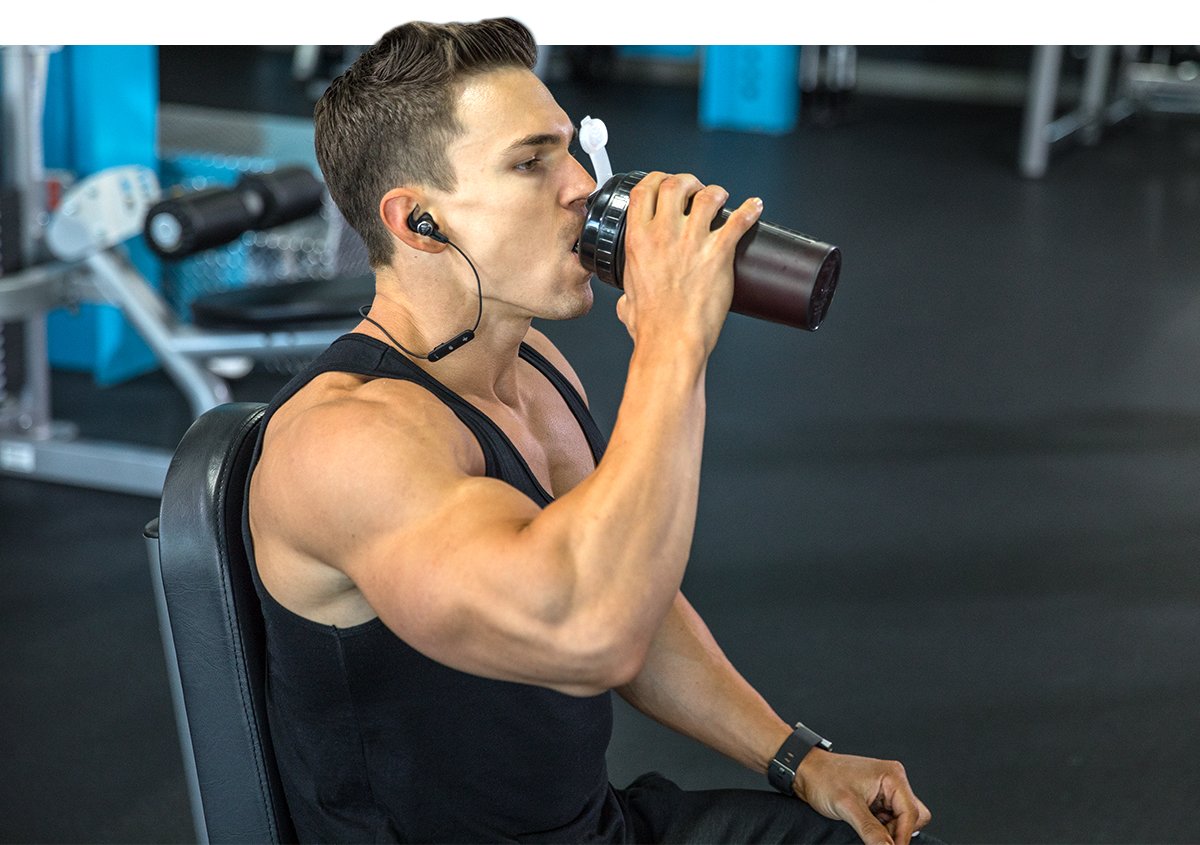
Drink Water
We all know that water is needed to properly hydrate the tissues, but very few people realize that the less water your body gets, the more it will try to store. You can have extremely low body fat and still look bloated because your body is holding onto fluids.
If your body realizes it's getting enough water on a constant basis—all day long—it will give up on trying to hold onto that water, and you'll lean out more evenly!
Common Cutting Problems and Solutions
Problem: You lost lean mass and some fat mass (everything went down).
Solution: Decrease cardio, increase your calories by 100-200 a day and recheck in one week.
Problem: Your fat increased and muscle stayed the same or increased.
Solution: Increase cardio, decrease your total daily calories by 300-500 a day and recheck in one week.
Problem: Muscle and fat stayed the same—no changes.
Solution: Change up your cardio routine (try HIIT), increase your total daily calories by 300 a day and recheck in one week.
Problem: Lean mass stayed the same and fat dropped.
Solution: That's not a problem! Continue with what you are doing and recheck in one week.
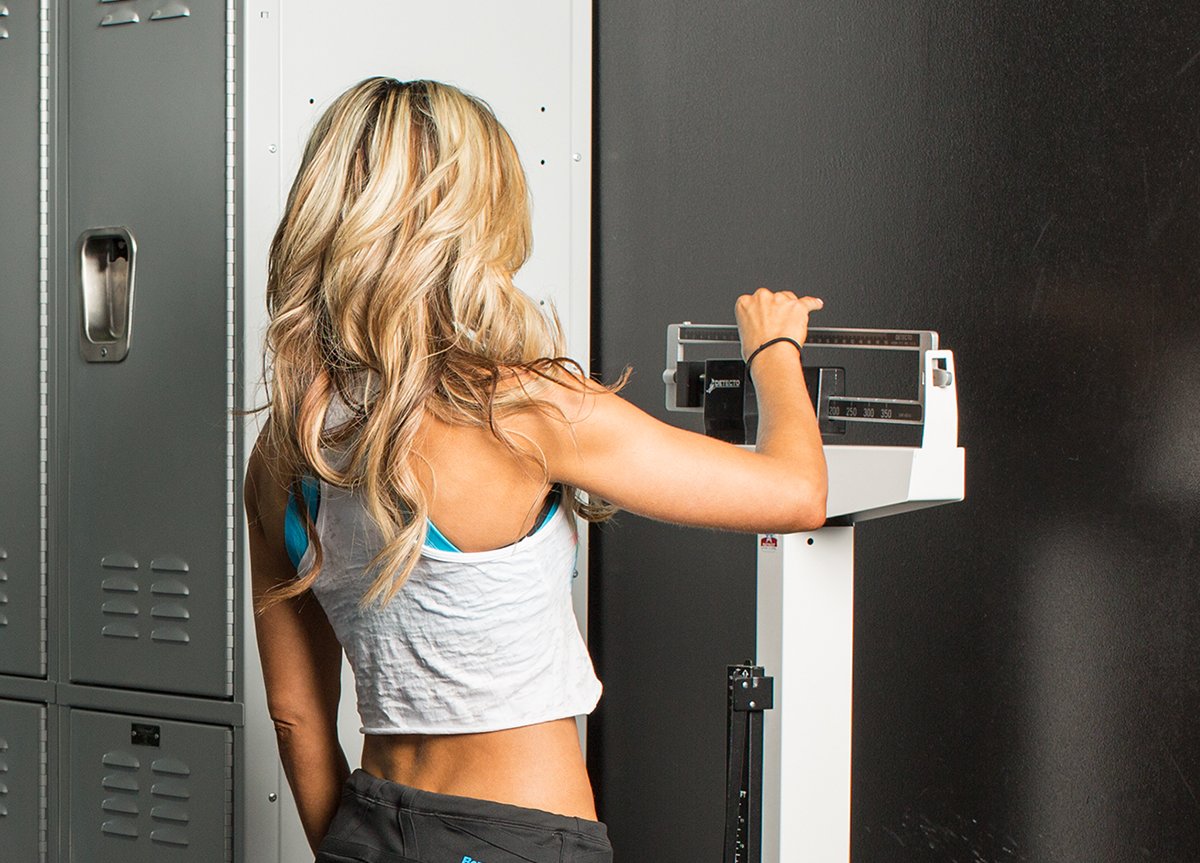
Anyone who takes the time to exercise and eat right, track their calories, and monitor their body composition can succeed in getting shredded.
It's all just a matter of discipline and priorities.

